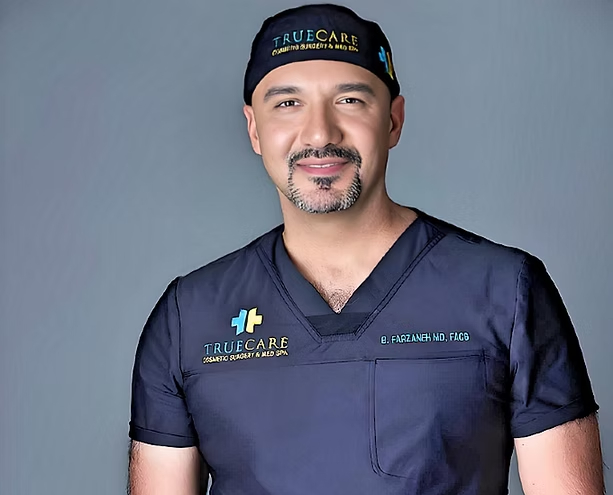Mini Tummy Tuck vs. Full Tummy Tuck: Which Is Right for You?
- Babak Farzaneh, MD, FACS

- Sep 20
- 3 min read
Updated: Sep 24
Why It Matters
A flat, toned stomach is one of the most common goals patients share when they come into my Chino Hills, CA, practice. But many are unsure whether they need a mini tummy tuck or a full tummy tuck to get there.
While both procedures fall under the umbrella of abdominoplasty, they differ in scope, recovery, and results. Choosing the right one depends on your anatomy, your personal goals, and even your lifestyle.
This guide breaks down the differences — so you can make an informed decision about which is right for you.

The Basics: Mini vs. Full
What Is a Mini Tummy Tuck?
Focuses only on the lower abdomen (below the belly button).
Removes excess skin and small pockets of fat.
Tightens the lower abdominal wall.
Leaves a shorter scar (typically low and hidden along the bikini line).
Recovery is generally quicker.
Best for patients who are close to their ideal weight but have stubborn “pouch” or loose skin under the navel.
What Is a Full Tummy Tuck?
Addresses the entire abdomen, from the ribcage down.
Removes larger amounts of skin and fat.
Tightens stretched abdominal muscles (common after pregnancy).
Repositions the belly button for a natural look.
Leaves a longer incision across the lower abdomen.
Recovery is more involved but results are more dramatic.
Best for patients with significant skin laxity, muscle separation (diastasis recti), or those who’ve experienced major weight loss or multiple pregnancies.
Key Differences at a Glance

Recovery: What to Expect
Mini Tummy Tuck
Downtime: Most patients return to work in 1–2 weeks.
Exercise: Light activity after 2 weeks; full exercise after 4–6 weeks.
Pain: Usually less intense than a full tummy tuck.
Full Tummy Tuck
Downtime: 3–4 weeks off work is typical.
Exercise: Gentle walking early, but strenuous activity delayed for 6–8 weeks.
Pain: More discomfort due to muscle tightening and larger incision.
Tip: Both procedures require you to avoid heavy lifting during recovery. Planning ahead helps ensure a smoother healing process.
Scarring and Longevity of Results
Mini Tummy Tuck Scar: Shorter, located low on the abdomen, often hidden under underwear or swimwear.
Full Tummy Tuck Scar: Longer, stretching across the hips, but fades over time with proper care.
With both, results are long-lasting — especially if you maintain a stable weight and healthy lifestyle.
Which One Should You Choose?
Here’s a quick way to think about it:
If you have a little loose skin and fat below your belly button, a mini tummy tuck might be enough.
If you have loose skin everywhere, stretch marks, and weak abdominal muscles, a full tummy tuck will deliver the best results.
Ultimately, the decision should be made with a board-certified plastic surgeon after a detailed consultation and physical exam.

Real-World Example
I often see young mothers who want their pre-pregnancy shape back. For a patient with just a small lower-belly bulge, a mini tummy tuck paired with liposuction can be life-changing. But for someone who’s had multiple pregnancies and lost abdominal tone, a full tummy tuck provides the natural, youthful contour they’re looking for.
Both mini and full tummy tucks can transform your midsection — the difference lies in how much correction you need.
Mini = less downtime, subtle refinement
Full = longer recovery, dramatic transformation
Tip: Patients who’ve had children or major weight changes often benefit more from a full tummy tuck.
If you’re considering abdominoplasty in Los Angeles, the first step is a consultation. Together, we can decide which option best fits your goals, lifestyle, and anatomy.


Comments